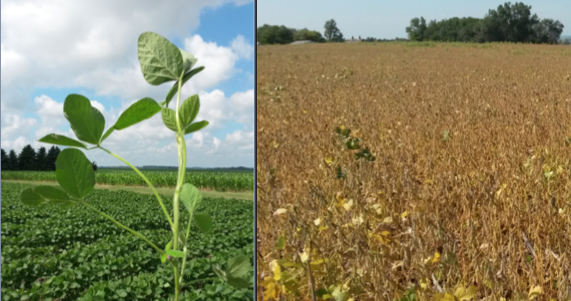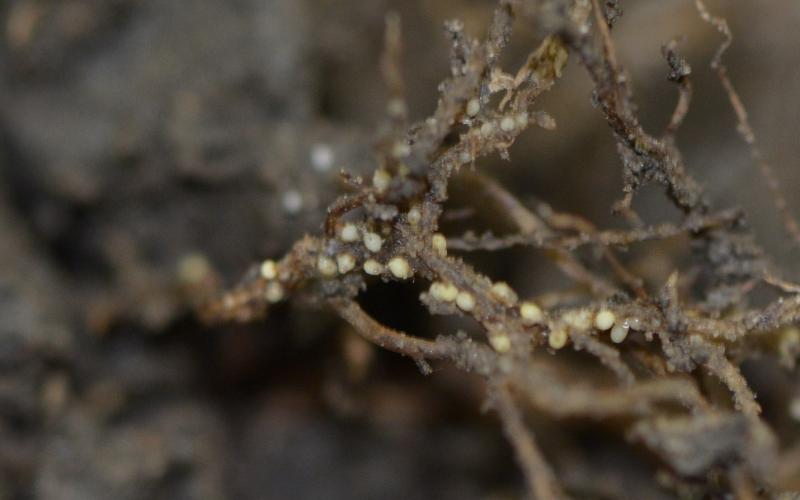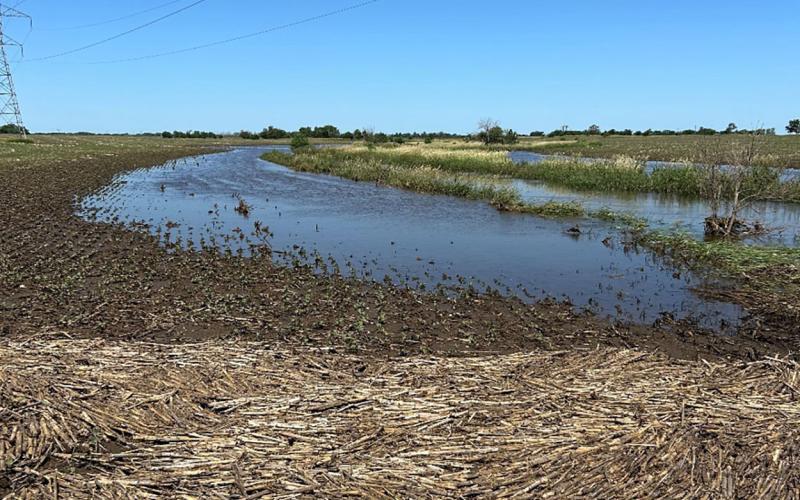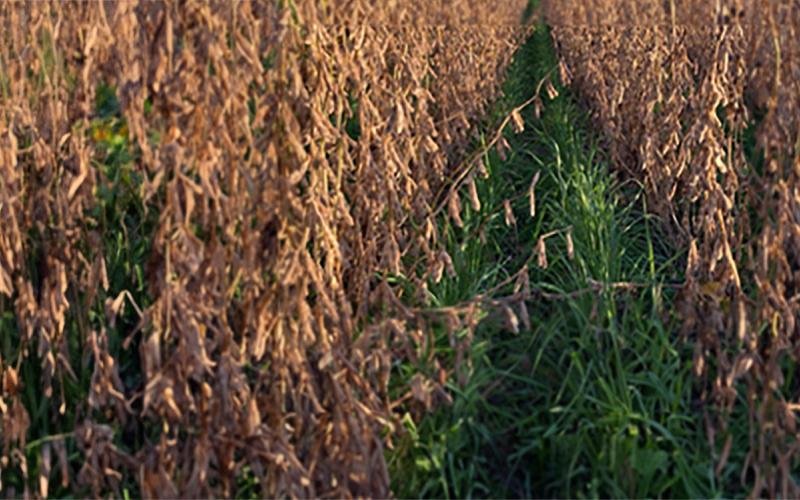Originally Published: September 13, 2019
Written with contributions by Jonathan Kleinjan, former SDSU Extension Agronomist.
Like most field crops, soybean exhibits two distinct growth stages- i) vegetative, and ii) reproductive. The vegetative stage occurs from emergence to first flower whereas the reproductive stage is the period between first flower and physiological maturity (i.e. the seeds have completed accumulating weight).
Reproductive Stages

As soybean fields in the region are rapidly heading towards maturity, we will only discuss reproductive stages in this article. The following briefly describes each incremental developmental stage, designated R1 to R8, of soybeans reproductive stage.
- R1 - First flower: One flower at any node on the plant
- R2 - Open flower at one of the two uppermost nodes
- R3 - Pod initiation: Pod 3/16 inch (0.5 cm) long at one of the four uppermost nodes
- R4 - Full Pod: Pod ¾ inch (2cm) long at one of the four uppermost nodes
- R5 - Seed Initiation: Seed 1/8th inch (3 mm) long in one of the pods at the four uppermost nodes
- R6 - Full seed: Pod at one of the four uppermost main stem nodes has one seed that has extended to the length and width of the pod
- R7 - Physiological maturity: Presence of one pod anywhere on the plant having mature brown color; 50% or more of the leaves are yellow
- R8 - Full maturity: 95% of the pods have the mature brown color
Seed fill stage is the most critical time during the soybean’s plant life cycle. Any kind of stress during this time can have significant impacts on crop yield. Most of the soybean fields in South Dakota are presently in at least R6 stage, unless they have been planted extremely late. Seed moisture content at R6 is about 70% and it is reduced to about 55% to 60% at R7. Under warm and dry weather conditions, it will generally take about 20 days to reach from R6 to R7. It will take another two weeks for the moisture content at R7 to drop to the ideal seed moisture content at harvest of 13 % to 14%. Soybean plants at or beyond R6 will have minimal risks to environmental stresses because the pods are fully developed. One weather risk in this region has always been an early frost. Impact of early frost on soybeans beyond R6 is a 5%-15% yield reduction depending on the severity and duration of cold temperatures. One of the considerations to reduce this risk is to plant varying maturity group soybeans, including some varieties that may have an earlier maturity rating than you normally plant. This way the damage from adverse events like early frost will not likely spread to all soybean fields.


